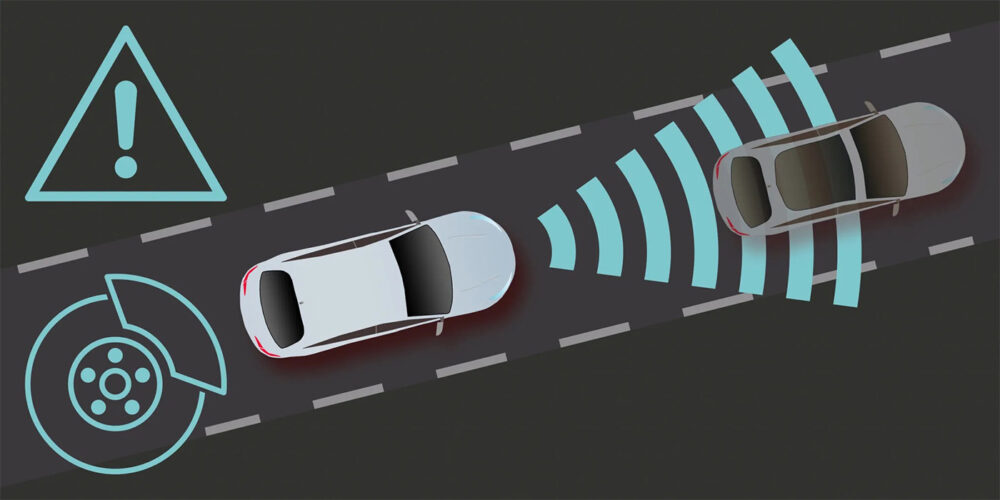As an automotive enthusiast and a safety advocate, I’ve always been intrigued by the advancements in driver assistance systems. Advanced driver-assistance systems (ADAS) have taken the automotive industry by storm, promising to make driving safer and more comfortable. But are modern cars with ADAS safer? Let’s dive into the world of ADAS and find out.
Introduction to ADAS
ADAS refers to a collection of technologies that aim to assist drivers in the driving process. These systems utilize sensors, cameras and other technologies to identify hazards and provide warnings or interventions to prevent or mitigate accidents. ADAS is not a new concept, but the technology has evolved significantly in recent years, with manufacturers integrating more advanced features into their vehicles.
Different Types
There are several types of ADAS technologies available in modern cars. Some of the most common ones include:
- Adaptive cruise control: Adaptive cruise control (ACC) is a feature that automatically adjusts the car’s speed to maintain a safe distance from the vehicle in front. ACC uses radar or cameras to detect the distance between the two vehicles and adjust the speed accordingly.
- Lane departure warning: Lane departure warning (LDW) is a feature that alerts the driver when the car is drifting out of its lane without a turn signal. LDW uses cameras to detect lane markings and can provide audible or visual warnings to the driver.
- Automatic emergency braking: Automatic emergency braking (AEB) is a feature that detects potential collisions and applies the brakes to prevent or mitigate the impact. AEB uses sensors and cameras to detect obstacles in the car’s path and can apply the brakes automatically if the driver fails to do so.
How Does ADAS Work?
ADAS technologies work by using a combination of sensors, cameras and software to identify potential hazards and provide warnings or interventions. These sensors and cameras are placed strategically around the car to provide a 360-degree view of the surroundings.
When a potential hazard is detected, the system will provide a warning to the driver, such as an audible or visual alert. If the driver fails to respond, the system will intervene by applying the brakes or taking other actions to prevent or mitigate the impact.
Safety Benefits
The primary benefit of ADAS is improved safety. By providing warnings and interventions, these systems can help prevent accidents and reduce the severity of collisions. Studies have shown that ADAS technologies can reduce the likelihood of accidents and injuries, making driving safer for everyone on the road.
Another benefit of ADAS is improved comfort and convenience. Features such as adaptive cruise control and lane departure warning can make driving more comfortable and less stressful, especially on long trips or in heavy traffic.
Limitations and Risks
While ADAS has many benefits, there are also some limitations and potential risks to consider. One of the main limitations of these systems is that they rely on sensors and cameras, which can be affected by weather conditions, dirt or other factors. If these sensors are not working correctly, the system may not be able to detect hazards accurately.
Another potential risk of ADAS is over-reliance on the system. Drivers may become complacent and assume that the system will take care of everything, leading to a false sense of security. This can be dangerous, as the driver may not be prepared to take control of the vehicle in an emergency.
Studies and Statistics
Numerous studies have been conducted on the safety benefits of ADAS technologies. According to a report by the National Highway Traffic Safety Administration (NHTSA), vehicles equipped with AEB have a 50% lower rear-end collision rate than vehicles without the technology. Another study by the Insurance Institute for Highway Safety (IIHS) found that vehicles with forward collision warning (FCW) and AEB had a 56% lower rear-end collision rate than vehicles without these features. These studies suggest that ADAS technologies can significantly reduce the likelihood of accidents and injuries on the road.
Preventing Accidents
There are many real-world examples of ADAS technologies preventing accidents and saving lives. For example, a Tesla Model X driver in California credits the car’s Autopilot system with saving his life after it automatically applied the brakes to avoid a collision with a truck that had lost control. In another instance, a Volvo XC60 equipped with City Safety AEB avoided a collision with a moose in Sweden, preventing potentially serious injuries to the occupants. These examples demonstrate the real-world benefits of ADAS technologies and how they can make driving safer for everyone on the road.
Maintenance and Calibration
To ensure that ADAS technologies work correctly, it is essential to keep them properly maintained and calibrated. This involves regular inspections and adjustments to ensure that the sensors and cameras are working correctly.
If the sensors or cameras are damaged or not working correctly, it is important to have them repaired or replaced as soon as possible. Failure to do so can result in the system not working correctly, potentially leading to accidents or injuries.
Future Developments
As technology continues to evolve, we can expect to see more advanced ADAS features in the future. For example, some manufacturers are working on systems that can detect and avoid pedestrians, cyclists and other vulnerable road users. Other developments include systems that can detect driver fatigue and provide warnings or interventions to prevent accidents.
Summary
Based on the studies and real-world examples, it’s clear that ADAS technologies can significantly improve safety on the road. However, it is important to remember that these systems are not foolproof and have limitations and potential risks that drivers should be aware of.
To ensure that ADAS technologies work correctly, it is essential to keep them properly maintained and calibrated. By doing so, drivers can enjoy the benefits of these systems while also ensuring that they’re safe and reliable on the road.
So, are modern cars with ADAS really safer? The answer is yes, but only if they’re used correctly and maintained properly.














